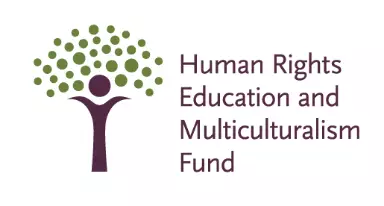
Donate to the Linda McKay-Panos Scholarship Fund

Donate to the Linda McKay-Panos Scholarship Fund
Many youth are employed, but unaware of the legal protections under human rights and employment law statutes. While some employers pride themselves on ensuring that a young person’s employment rights are upheld, others may be lacking the knowledge needed regarding the law. Youth face issues in the workplace related to employment law such as vacation pay, overtime and receiving proper breaks. In addition youth may face human rights issues including discrimination and harassment.
Youth may be exposed to discrimination or harassment in the workplace based on grounds such as race, gender or disability. However, when discrimination happens to a youth it is compounded by the young person’s lack of experience in the work world. Some youth will not have enough experience at work to know what is right and what is wrong; what is a normal work rule and what is illegal or discriminatory. Lesbian, gay, bisexual and trans-identified (“LGBT+”) youth are protected in the workplace by human rights and employment legislation as discussed in this chapter.
As discussed earlier in this booklet there are many ways to show support. At work you can be an LGBT ally by:
All of these actions indicate to other staff that you support equality for all people.
All youth need mentorship in their work relationships. This is often the first time that they are involved in a professional relationship outside of their family, school, or friends. Often getting a job means working for people that you would otherwise have little interaction with. An employer will likely be unfamiliar with the youth’s family or friends and therefore have no emotional ties to that youth. While employers are bound by employment standards and human rights legislation, violations in these areas can easily happen in a youth population, which has little power or knowledge of their rights. Young people are vulnerable to abuse at work because of their lack of experience. Unless they have an adult who monitors the employment relationship, they are dependent upon the employer’s ability and willingness to uphold the law.
See ACLRC’s Youth Employment Handbook.
The Employment Standards Code, RSA 2000, c E-9 [EMT Code] regulates minimum standards for workers in Alberta. The EMT Code covers workplace standards such as:
These laws apply to all youth regardless of their sexual orientation. For more information on human rights issues and LGBT youth see the “Human Rights Legislation and the Workplace” section and check out the human rights employment cases.
In general, under the EMT Code an ‘adolescent’ is anyone who is 12 to 14 years of age. A ‘young person’ is someone who is 15 to 17 years of age. Certain provisions of the EMT Code apply to these specific age groups.
The regulations (Employment Standards Regulation, Alberta Regulation 14/97) for the EMT Code outline what age children may work and in what roles. Adolescents may work in the following positions (s 52(1)(a)):
i. delivery person of small wares for a retail store,
ii. clerk or messenger in an office,
iii. clerk in a retail store,
iv. delivery person for distribution of newspapers, flyers or handbills, or
v. worker in an occupation approved by the Director
An adolescent cannot work longer than 2 hours (outside of school hours) on a day when school is mandated. An adolescent cannot work for longer than 8 hours on a day when school is not required.
A young person may not be employed at the following jobs between the hours of 9pm and midnight unless they are in the continuous presence of an adult (s 53):
Subsection 1
a) the premises of any retail business selling
(i) food or beverages, whether alcoholic or not, or
(ii) any other commodities, goods, wares or merchandise;
b) the premises of a retail business in which gasoline, diesel fuel, propane or any otherproduct of petroleum or natural gas is sold;
c) a hotel, motel or other place that provides overnight accommodation to the public.
During the hours of midnight to 6am a young person may not work in any of the premises outlined in subsection 53(1) above. In addition, a young person may not work between midnight and 6am in any other employment unless they have written consent of a parent or guardian and work with an adult continuously.
Regarding other rights under the Employment Standards Code, people under 18 years of age have the same rights and responsibilities as an adult. A complaint to the Alberta Employment Standards must be made within six months of the last day the employee worked (see EMT Standards website here). Before a complaint is filed the employee is expected to try to resolve the complaint on his/her own (for more information, see: Alberta Job, Skills, Training and Labour: Employment Standards) If this resolution fails then the employee can file a complaint directly to Employment Standards. More information on these items and other minimum standards for workers can be found on the Employment Standards website as noted above.
The Alberta Human Rights Act [HRA] prohibits discrimination in the workplace. Section 7 of the HRA states:
(7)(1) No employer shall
a) refuse to employ or refuse to continue to employ any person, or
b) discriminate against any person with regard to employment or any term or condition of employment
because of race, religious beliefs, colour, gender, gender identity, gender expression, physical disability, mental disability, age , ancestry, place of origin, marital status, source of income, family status or sexual orientation of that person or of any other person.
Section 7 of the HRA may be useful in situations such as: where an employer will not hire a new employee because of his/her sexual orientation or gender identity; where there are other forms of discrimination at work against a person who is LGBT+; where an LGBT+ person is terminated because of his/her sexual orientation or gender identity. If you feel harassed or discriminated against, try the following:
Harassment may be caused by a poisoned work environment, co-workers, supervisors, or customers within the workplace environment. An organization is responsible for ensuring LGBT+ employees work in a non-discriminatory work environment. Some examples that could lead to discrimination in the workplace based on sexual orientation or gender identity are:
The following cases track some instances of discrimination where the person brought their complaint to a court or tribunal.
Vriend v Alberta, [1998] 1 SCR 493
Mr. Vriend was a gay teacher who was fired from his position at an Anglican college called King’s College. Mr. Vriend disclosed his sexual orientation to the President of the College. This caused King’s College to devise a position statement on homosexuality and to request that Mr. Vriend resign his job as a teacher. However, Mr. Vriend refused to resign and so King’s College terminated him for not complying with the policy on homosexuality.
Mr. Vriend tried to make a complaint to the Alberta Human Rights Commission but found that, at the time, “sexual orientation” was not clearly written into the HRA. He filed a Charter challenge of the HRA stating that it was under-inclusive and infringed section 15(1) of the Charter (Part I of the Constitution Act, 1982, being Schedule B to the Canada Act 1982 (UK), 1982, c 11 [the Charter]) The case eventually was heard by the Supreme Court of Canada, which decided to read-in ‘sexual orientation’ into the legislation (i.e., read the HRA as if sexual orientation was included).
This was a pivotal moment for LGBT+ communities in Alberta. The Alberta Human Rights Act was thereafter read as if all of the sections included sexual orientation. Since that decision in 1998 LGBT+ rights in Alberta in the workplace, services, unions, signs and in rental accommodations have been protected. Mr. Vriend had spent eight years fighting for his basic human rights to be covered. After so many years of litigation to have sexual orientation included in the Alberta Human Rights Act Mr. Vriend did not proceed with his original complaint that King’s College had fired him.
Currently, sexual orientation is written into each section of the HRA and courts/tribunals no longer have to rely on the Vriend decision to prove that it is covered under the HRA.
Montreuil v National Bank of Canada, 2003 CHRT 27
Discrimination in the workplace includes a refusal to hire a potential employee because of his/her LGBT status. Montreuil v National Bank of Canada involved a trans woman who had applied at a call centre at the National Bank of Canada (“National”). Ms. Montreuil made it through three levels of interviews with good results at each stage. However after the final interview she was told that National could not hire her. The position she had applied for had a high turnover rate and the Bank was hiring employees on a continuous basis so the position continued to be advertised. Ms. Montreuil filed a complaint with the Canadian Human Rights Commission stating that she had been refused employment because of her gender identity. The Canadian Human Rights Tribunal, which has responsibility for human rights in federally-regulated workplaces, heard the case.
National argued that it had not hired Ms. Montreuil because she was overqualified and self-centered. In addition, the interviewers speculated that Ms. Montreuil’s real motive for applying for the job was to use her position to promote transgender rights. The Tribunal examined these reasons and found that a discriminatory pretext was underlying the employer’s refusal to hire her.
Ms. Montreuil had said in the interview that she had applied for an entry-level position because she knew National often hired internally. She was interested in working with the company and committed to taking the time to work her way up from within the bank. The Tribunal focused its reasons on the interviewers’ concerns that Ms. Montreuil wanted to promote transgender rights. Ms. Montreuil was never asked if this was her intention, nor did she state that is was. She made some comments about how minority groups were gaining access to larger companies. The interviewers interpreted this to mean that Ms. Montreuil was intent on being an “… ‘ambassador’ of her ‘type’….” even though she had never made such an assertion.
Under human rights law, the discrimination need only be one of the reasons for which a person is not hired. The interviewers for National had used Ms. Montreuil’s transgender status as, at least, one of the reasons she was not hired. Therefore, although they also thought that she was over-qualified, they had discriminated against her by refusing to hire her because they thought she would want to lobby for transgender rights.
Mamela v Vancouver Lesbian Connection, (1999) 36 CHRR D/318 (BCHRT)
In Mamela a self-identified transgender woman, who volunteered with the Vancouver Lesbian Connection (“VLC”), was asked to leave the organization. The VLC was aware of her transgender status as a volunteer, but later had a disagreement regarding the social construction of the term ‘woman’. The argument resulted in bad feelings and eventually the VLC suspended Ms. Mamela’s membership for a period of one year and prohibited her from attending events and going to the VLC Centre. The British Columbia Human Rights Tribunal found that the VLC had discriminated against Ms. Mamela based on her sex. The decision was based on the finding that:
The tribunal found that Ms. Mamela had been discriminated against under the area: “services customarily available to the public”. She was awarded $3000.00 for injury to dignity, feelings and self-respect.
Vancouver Rape Relief Society v Nixon, 2003 BCSC 1936, 2005 BCCA 601 [VRRS]
VRRS; application for leave to appeal to Supreme Court of Canada denied) is a case involving a volunteer rape crisis worker. VRRS provided a 24-hour rape crisis line, a transition house for women and children, support, referrals and group peer counselling to women who had been sexually assaulted. Kimberly Nixon applied to be a volunteer peer-counsellor at VRRS. VRRS accepts peer-counsellors who are women, feminist, anti-racist, pro-choice and pro-lesbian. Ms. Nixon agreed with these tenets and was therefore invited to attend a training session. However, one of the facilitators suspected Ms. Nixon had lived part of her life as a man. The facilitator pulled Ms. Nixon aside, and after confirming her transgender identity, requested that she leave the training group. Ms. Nixon filed a human rights complaint based on being denied the opportunity to volunteer.
The B.C. Human Rights Tribunal found that Ms. Nixon’s rights had been violated. The British Columbia Supreme Court (“BCSC”) overturned that decision and found that VRRS had a right to exclude Ms. Nixon because women who had been raped were entitled to female-born counsellors. Ms. Nixon appealed this decision to the British Columbia Court of Appeal, which found that VRRS had discriminated against her, but was exempt under section 41 of the British Columbia Human Rights Code (RSBC 1996, c 210). Section 41 provided an exemption for charitable organizations that have a primary purpose of promoting the welfare of an identifiable group. Ms. Nixon appealed this decision to the Supreme Court of Canada but was refused leave to appeal. The facts from this case and the court decisions have been the cause of much debate regarding transgender rights.
Hosseini v Pro Vita Care 2014 BCHRT 2005
Sayeh Hosseini (“Hosseini”) worked as a Resident Care Aide at Carlton Gardens for two years from 2008 to 2010 when she dressed and presented as female. Her supervisor was aware that she was a transgender woman. Carlton Gardens closed down and Hosseini went to work at a different facility. Eventually, the Respondent took over the new facility, the Royal Arch Masonic, and held interviews for existing employees to see if they would be re-hired under the new ownership, and Hosseini was interviewed to work permanently at the Royal Arch Masonic. The Respondent conducted 100 interviews for 82 jobs; 68 people interviewed had previously worked at the facility.
Hosseini received a poor test score, did not have supervisor references, did not have as good work experience and did not perform well in the interview. The Respondent did not hire her for the job. Hosseini claimed that she was not hired because she is a transgender woman. The British Columbia Human Rights Tribunal, on a preliminary application, found that Hosseini’s claim did not have a reasonable prospect of success. The complaint was dismissed.
In the Matter of Marriage Commissioners Appointed Under the Marriage Act, 1995, SS, c M-4-1 [2011] SJ No 3.
The Federal government filed a reference question with the Supreme Court of Canada (“SCC”) (Reference Re Same-sex Marriage, 2004 SCC 79), in which the SCC confirmed the legal validity of same-sex marriage.
Three marriage commissioners in Saskatchewan, including Orville Nichols (“Nichols”), filed a human rights complaint alleging that the necessity of performing same-sex marriage in their jobs as marriage commissioners violated their religious freedom. This complaint was dismissed. In April 2005 a complaint was made against Nichols for refusing to solemnize a same-sex marriage ceremony. The complaint was upheld.
In November 2008 Nichols and two other marriage commissioners sued the Government of Saskatchewan, the Attorney General and the Director of the Marriage Unit asking for a declaration that solemnizing gay-marriage was a breach of their Charter rights.
The Lieutenant Governor in Council asked the Saskatchewan Court of Appeal to examine whether marriage commissioners could refuse to solemnize a same-sex marriage based on their religion. The Saskatchewan government was proposing an amendment to the Marriage Act, 1995 to make it permissible for marriage commissioners, appointed before the Reference Re Same-sex Marriage case, to refuse to solemnize a marriage if it was against his/her religious beliefs and s/he filed a notice to this effect within a specified period of time. Alternatively the government asked if it violated the Charter to simply state that it was not required that a marriage commissioner solemnize a marriage if it was contrary to his/her religious beliefs.
The Court found that both amendments to the Saskatchewan’s Marriage Act would violate the equality rights of gay and lesbian people under the Charter and were not saved by section 1 of the Charter. The Saskatchewan Court of Appeal stated:
The Supreme Court has repeatedly confirmed that freedom of religion is not absolute and that, in appropriate cases, it is subject to limitation. This is clearly one of those situations where religious freedom must yield to the larger public interest.




2500 University Drive NW
Calgary, AB T2N 1N4
(403) 220-2505
aclrc@ucalgary.ca